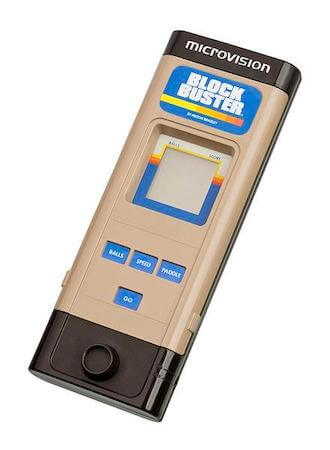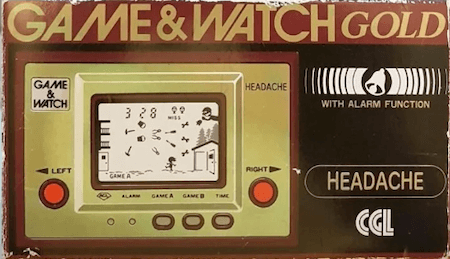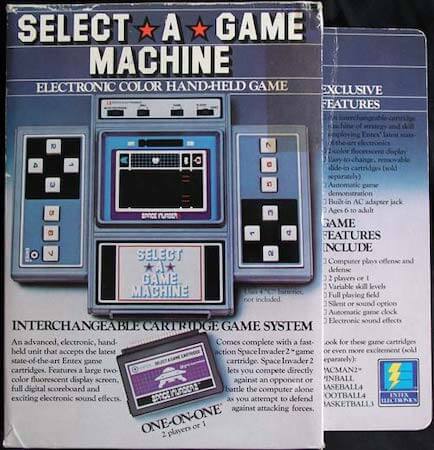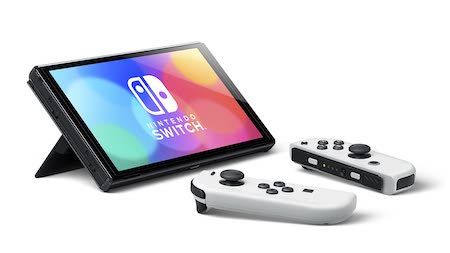Lost Gems: Learn the Roots of Handheld Gaming Before the Game Boy
In the annals of gaming history, the Game Boy is remembered as a trailblazer. The handheld console with its small monochrome screen sold 118 million worldwide. It quickly captured the hearts of gamers and ignited a gaming revolution, spawning legendary gaming titles like Pokemon and Mario Bros. But the Game Boy didn't simply emerge onto the market in a vacuum. Before the Game Boy's triumphant arrival in 1989, a procession of other handheld gaming consoles had already laid the foundation for portable gaming experiences.

These precursors introduced ground-breaking features and gameplay innovations that helped shape the landscape of handheld gaming. However, as is often the case in the world of innovation, success depends on factors such as timing, market readiness, and the competitive environment, like the unpredictable outcomes seen on TV's "Shark Tank." In the grand tapestry of gaming history, these devices played a significant role in paving the way for the iconic Game Boy.
Great Ideas Can Have Variable Fortunes
From the triumphs of Shark Tank to the pioneers before the Game Boy, success stories are abundant. Yet, amidst the victories, missed opportunities are reminders of unpredictable fates. Just as the Sharks scoffed at Door Bot's potential to turn into a lucrative business (the item was later rebranded Ring and bought by Amazon for $1 billion), the Game Boy's forerunners remind us that not all innovations bloom immediately.
While there have been nine generations of consoles as of 2020 to present day, during this time, several consoles have tried and failed. Just like the entrepreneurs on these shows, gaming innovators tread a delicate line between acceptance and rejection. Just as wise investors can stumble, great concepts like these forgotten consoles can face unforeseen hurdles. Fortunately, though, some missed opportunities can yield unexpected futures.
Microvision: First cartridge-based console
Microvision was released in 1979 by Milton Bradly, costing $49.99 (equivalent to $200 today),  and was the world's first cartridge handheld console. It had a tiny LCD screen (hence its name) and nine buttons, with a different button configuration for each game. Microvision's small collection of games included Block Buster and Star Trek Phaser Strike. While the console enjoyed initial success, Microvision disappeared from the market by 1981 due to various technical issues, short battery life and a limited number of games available.
and was the world's first cartridge handheld console. It had a tiny LCD screen (hence its name) and nine buttons, with a different button configuration for each game. Microvision's small collection of games included Block Buster and Star Trek Phaser Strike. While the console enjoyed initial success, Microvision disappeared from the market by 1981 due to various technical issues, short battery life and a limited number of games available.
The Microvision may have been short-lived, it laid a crucial foundation for future handheld gaming consoles. Its use of cartridges to expand its game library was a revolutionary concept that would later be adopted and perfected by subsequent consoles. The idea that players could switch between different games on a single device was novel and would become a staple feature of handheld gaming in the years to come. Microvision planted the seeds for the portable gaming revolution that the Game Boy would later lead.
Game & Watch: Single game devices
In 1980, Nintendo's Game & Watch series was a pioneering step toward the handheld gaming revolution. These single-game devices featured simple LCD screens and a built-in clock and alarm function and were portable, affordable, and widely popular. Titles like Donkey Kong and Ball became instant hits, selling over 43 million units worldwide. Most titles had a 'GAME A' and a 'GAME B' button. Game B is usually a faster, more difficult version of game A. Nintendo's Game & Watch series was a significant milestone in the evolution of handheld gaming.
'GAME B' button. Game B is usually a faster, more difficult version of game A. Nintendo's Game & Watch series was a significant milestone in the evolution of handheld gaming.
The devices were highly portable and featured charming, simplistic gameplay that appealed to a wide audience. Incorporating a clock and alarm function made them practical for everyday use, further enhancing their appeal.
While each Game & Watch device was limited to a single game, they showcased Nintendo's ability to create engaging experiences on a small, handheld screen. This success would set the stage for Nintendo's dominance in the handheld gaming market with the Game Boy.
Select-A-Game: Handheld arcade classics!
The Entex Select-A-Game, introduced in 1981 by Entex Industries, marked an early foray into  handheld gaming. This innovative system featured interchangeable cartridges and presented gamers with a captivating taste of arcade classics on a portable platform. With a library of six games, it provided a diverse gaming experience for its time.
handheld gaming. This innovative system featured interchangeable cartridges and presented gamers with a captivating taste of arcade classics on a portable platform. With a library of six games, it provided a diverse gaming experience for its time.
The Entex Select-A-Game was an early attempt to bring the excitement of arcade gaming to the palm of your hand. With interchangeable cartridges, it allowed players to experience a variety of games on a single device, a concept that would later become a standard feature in handheld gaming.
Its library of six games showcased a range of gameplay styles, giving players a taste of the arcade classics, they loved. While it may not have achieved the fame of later handheld consoles and eventually faded into obscurity, the Entex Select-A-Game demonstrated the potential for portable gaming experiences beyond single-game devices.
The Game Pocket Computer: Pioneering multitasking handheld
The Epoch Game Pocket Computer, or Pokekon, was a groundbreaking blend of entertainment and education. Launched in 1984, its calculator-like design hid a wealth of gaming experiences and a  BASIC programming language interpreter. This allowed users to create their own games and programs. A 75x64-pixel monochrome display offered an impressive 60-70 hours of gameplay on four AA batteries, powered by a 6 MHz NEC uPD78c06 CPU with a single sound channel. While it had a cartridge slot, two basic built-in games - Graph (a paint program) and a sliding puzzle - were underwhelming.
BASIC programming language interpreter. This allowed users to create their own games and programs. A 75x64-pixel monochrome display offered an impressive 60-70 hours of gameplay on four AA batteries, powered by a 6 MHz NEC uPD78c06 CPU with a single sound channel. While it had a cartridge slot, two basic built-in games - Graph (a paint program) and a sliding puzzle - were underwhelming.
Unfortunately, it only had five game cartridges like Astro Bomber and Block Maze. This early multitasking gaming and educational device remained limited to Japan, yet it hinted at the potential of versatile handheld consoles. The Game Pocket Computer offered a glimpse into the future of handheld gaming, where devices would do more than just play games.
The Launch of the Game Boy: Ground-breaking Handheld
The Game Boy was launched by Nintendo in 1989 and the ground-breaking handheld gaming console appealed to a wide range of gamers. Its extraordinary success can be attributed to its affordability, reliability and portability, and it was accessible to both adults and kids. Its monochrome, reflective LCD screen was also clear and power-efficient, providing extended gameplay on just a set of AA batteries.
The original Game Boy featured a sleek, rectangular design with a gray plastic shell. The button layout consisted of the classic directional pad on the left, A and B buttons on the right and Start and Select buttons in the middle. There was also a small speaker below the screen for game audio. The Game Boy's library of games included Tetris, Super Mario Land and The Legend of Zelda.
The Game Boy also came with a link cable that enabled multiplayer gaming that promoted social interaction. What truly set the Game Boy apart was its portability. It could easily fit into a bag or pocket, so it was the ideal companion for gamers on the go.
The Nintendo Switch: Power and Portability
 Today's equivalent of the Game Boy is arguably the Nintendo Switch, the world's third bestselling console of all time. Since its release in 2017, a staggering 122.55 million consoles have been sold. The Nintendo Switch combines the portability of a handheld device with a home console's power and versatility. It features a 6.2-inch touchscreen display and detachable Joy-Con controllers, offering various gameplay modes.
Today's equivalent of the Game Boy is arguably the Nintendo Switch, the world's third bestselling console of all time. Since its release in 2017, a staggering 122.55 million consoles have been sold. The Nintendo Switch combines the portability of a handheld device with a home console's power and versatility. It features a 6.2-inch touchscreen display and detachable Joy-Con controllers, offering various gameplay modes.
The Nintendo Switch offers a diverse library of games, ranging from iconic Nintendo titles to third-party releases. Its portability allows gamers to seamlessly transition between playing on the go and connecting it to a TV for a traditional console experience. The system also supports local and online multiplayer. While the Game Boy was revolutionary, the Nintendo Switch takes portable gaming to a new level in the modern era. Its hybrid design and impressive game library make it a spiritual successor to the Game Boy, catering to a wide audience of gamers looking for convenience and high-quality gaming experiences.
The Future of Handheld Gaming
We can expect the future of handheld gaming to be shaped by the continuous technological evolution and shifting consumer preferences. Handheld gaming devices will see improvements in graphics and performance thanks to advancements in processors, GPUs, and cooling systems, enabling console-quality gaming experiences on portable devices.
Moreover, augmented reality (AR) and virtual reality (VR) will gain more prominence with integration into handheld gaming. This could involve AR glasses or VR headsets, offering players immersive gaming environments and interactions. Cloud gaming services will also become prevalent, granting gamers access to extensive game libraries on handheld devices without needing high-end onboard hardware. Meanwhile, cross-platform play will become more seamless, enabling handheld gamers to engage with friends on consoles and PCs. Biometric sensors and enhanced haptic feedback will also help make gaming experiences more lifelike and ensure players can always enjoy new and engaging experiences.
While the early consoles may not have achieved the same level of success as the Game Boy, they undeniably played crucial roles in shaping the handheld gaming industry. Their innovations in areas like cartridge-based gaming, LCD screen technology, and multiplayer experiences laid the groundwork for the Game Boy, Switch and beyond.

Comments